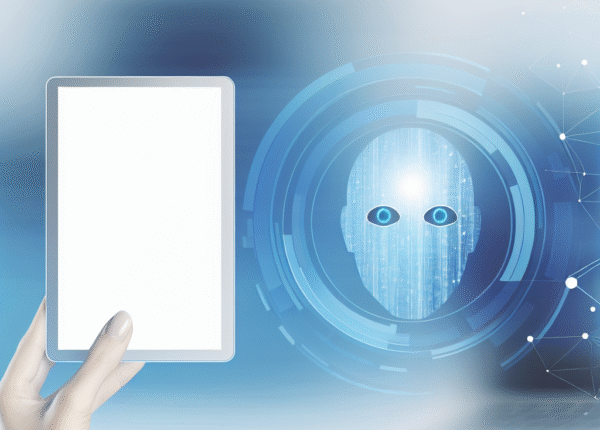Artificial intelligence is no longer a lab experiment. It’s seeping into classrooms, our creative culture, and the safeguards we build around our children. A case in point is Alpha School San Francisco, a private K-8 experiment that claims to teach faster using AI assistance and a lean daily schedule. The school advertises two hours of focused work per day, with AI acting as a tutor and a facilitator to accelerate learning. In a city known as the world’s tech innovation epicenter, this venture sits at the intersection of promise and skepticism. Experts warn that the benefits may not be universal; access to AI-powered education could depend on resources and home support, and the long-term effects on motivation and critical thinking remain to be studied. The Guardian piece on the school paints a vivid picture of a bold new model that may redefine what “school” looks like in the AI era.
Beyond the doors of Alpha School, the AI revolution is reshaping how we think about creativity and authorship. A platform that attempts to quantify the exact share of copyrighted material used by AI tools—by tracing references in AI-generated art—speaks to a broader struggle over data rights and transparency. From iconic characters like James Bond to Doctor Who-inspired visuals, the question is not only about legality but about how much of a tool’s output is rooted in pre-existing material. This kind of accountability matters, not just for artists who fear erasure of their work, but for developers who need reliable signals to train models responsibly. As AI’s creative potential expands, so does the demand for clear usage boundaries and practical traceability.
The discussion then shifts to the human dimension of technology. At MIT’s Media Lab in Cambridge, researchers showcase an ecosystem of experiments—from wearable brain-computer interfaces to AI-powered assistants—that hint at a future where technology can bridge communication gaps for people with mobility or speech challenges. Yet the same demos also raise questions about cognitive load, dependence on AI, and how much we should delegate to machines. As Nataliya Kosmyna notes, the anxiety that AI is rewiring memory and attention is not just science fiction; it’s observable in how people interact with tools like ChatGPT in daily work and study. The takeaway is not to retreat from AI, but to design systems that augment human capabilities without dampening curiosity or resilience.
Safety and governance are no longer afterthoughts. In one policy-driven move, parents will be able to block Meta’s AI chatbots from talking to their under-18 children, a feature meant to curb inappropriate conversations in teen-focused accounts across Facebook, Instagram, and the Meta AI app. Meanwhile, in Australia, ministers warn that AI chatbots are amplifying bullying—a stark reminder that these technologies can harm as well as help, unless there are robust safeguards and ethical guidelines. Taken together, these stories underscore a common thread: as AI becomes more embedded in education, culture, and everyday interaction, we must pair innovation with clear protections for young users and responsible data practices.
In sum, today’s AI news reads like a mosaic of promise and caution—private schools reimagining learning, artists and lawyers grappling with data rights, researchers exploring human-computer collaboration, and policymakers contending with the safety nets needed for children online. The tempo is accelerating, but the compass remains human: we must guide AI with thoughtful design, inclusive access, and principled governance so that the benefits multiply without compromising integrity or safety.
Sources
- Robin Buller, Inside San Francisco’s new AI school: is this the future of US education? (The Guardian) — https://www.theguardian.com/technology/2025/oct/18/san-francisco-ai-alpha-school-tech
- Dan Milmo, The platform exposing exactly how much copyrighted art is used by AI tools (The Guardian) — https://www.theguardian.com/technology/2025/oct/18/the-platform-exposing-exactly-how-much-copyrighted-art-is-used-by-ai-tools
- Samuel Ojo, Samuel Ojo on the future of technology and basic human needs – cartoon (The Guardian) — https://www.theguardian.com/commentisfree/picture/2025/oct/18/samuel-ojo-technology-ai-cartoon
- Sophie McBain, Are we living in a golden age of stupidity? (The Guardian) — https://www.theguardian.com/technology/2025/oct/18/are-we-living-in-a-golden-age-of-stupidity-technology
- Dan Milmo, Parents will be able to block Meta bots from talking to their children under new safeguards (The Guardian) — https://www.theguardian.com/technology/2025/oct/18/parents-will-be-able-to-block-meta-bots-from-talking-to-their-children-under-new-safeguards
- Cait Kelly, AI chatbots are hurting children, Australian education minister warns as anti-bullying plan announced (The Guardian) — https://www.theguardian.com/technology/2025/oct/18/ai-chatbots-are-hurting-children-australian-education-minister-warns-as-anti-bullying-plan-announced
Related posts
-
AI’s Expanding Frontiers: Education, Art Copyright, and Safeguards
Artificial intelligence is no longer a lab experiment. It’s seeping into classrooms, our creative culture, and the safeguards...
18 October 202529LikesBy Amir Najafi -
AI News Synthesis: Roadmaps, Risks, and Real-World Wins Across Sectors
AI News Synthesis: Roadmaps, Risks, and Real-World Wins Across Sectors Aug 28, 2025 — A day of cross-sector...
28 August 202586LikesBy Amir Najafi -
AI at Work and in Classrooms: Moderation, Ethics, and Greece’s AI Education Pilot
AI news this week shows a clear pattern: the push to deploy new systems often outpaces safety and...
22 November 202504LikesBy Amir Najafi


